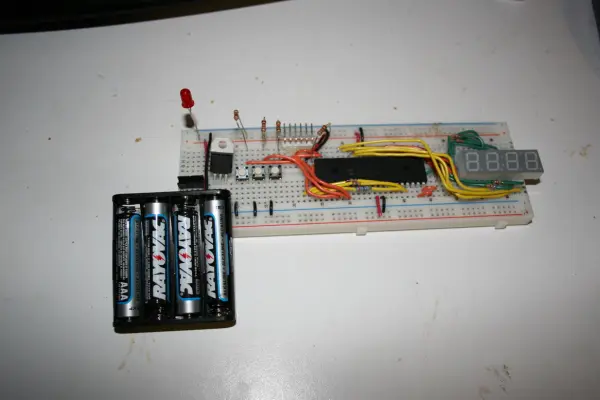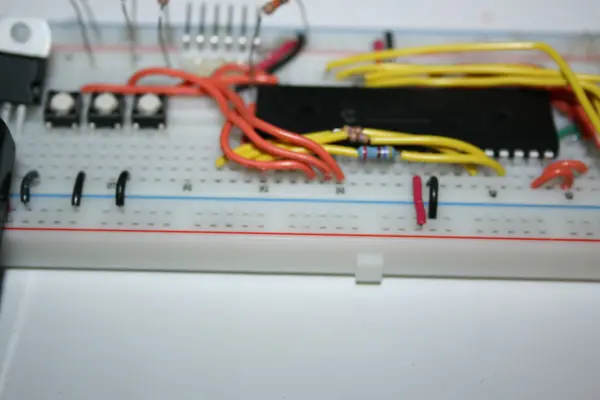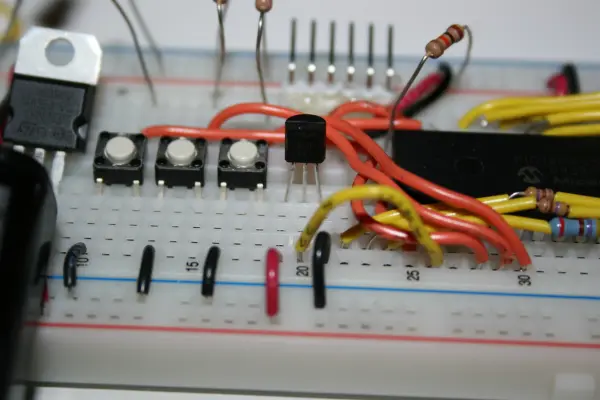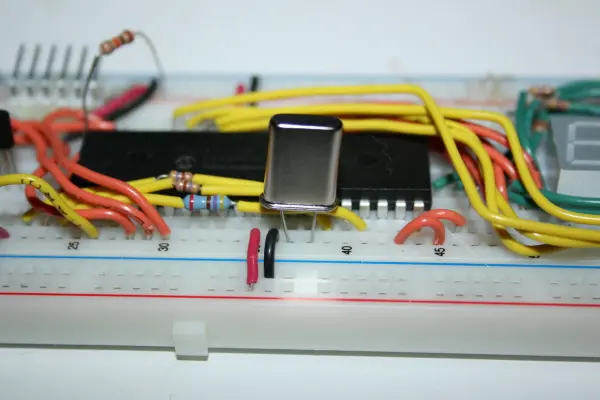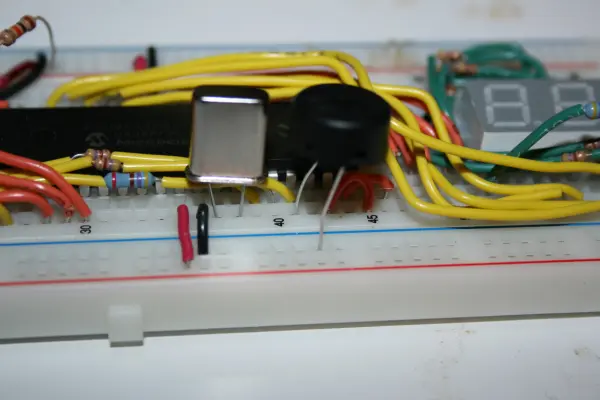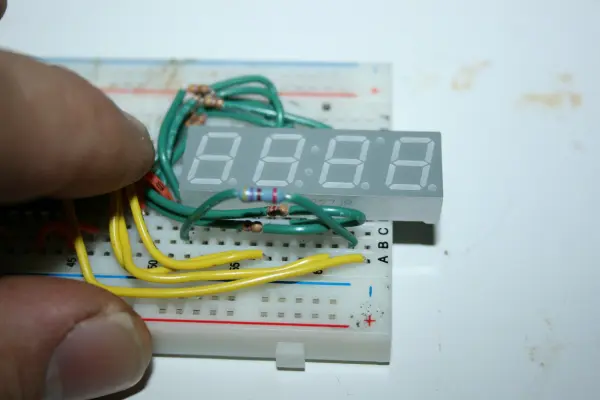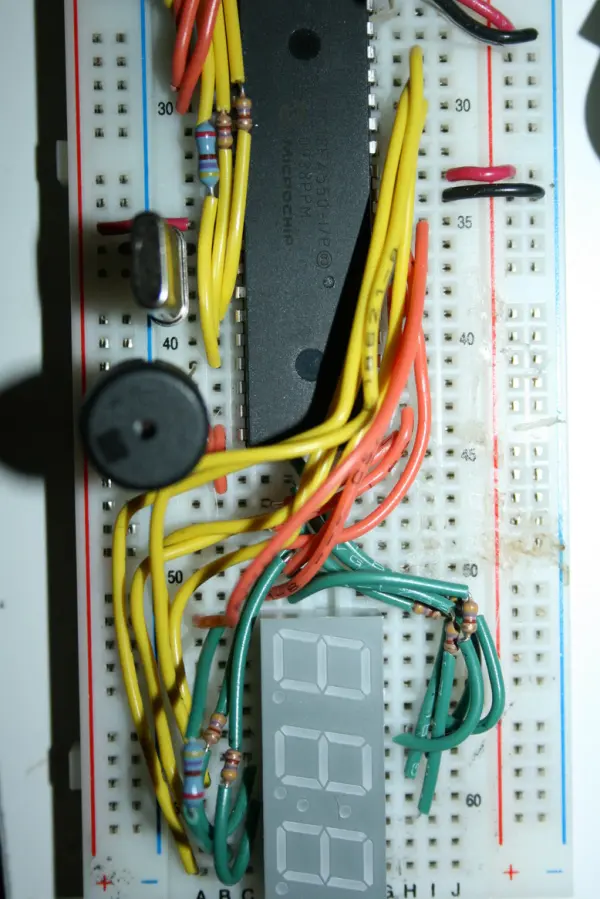Within this laboratory session, you’ll employ the C language to create an alarm clock, delving into the implementation of “C” programs on the PIC18 microcontroller. Additionally, you’ll gain insights into utilizing interrupts, executing digital-to-analog conversion, and incorporating music playback capabilities on the PIC18.
This project operates on a team basis, allowing a maximum of two members per team. While individual work is permissible, all projects will be assessed using identical grading criteria.
Step 1 .Intial Setup
Take out the Full Color LED and keep it in a secure place. You might opt to utilize it at a later stage in this project.
Shift the button cables two positions to the right, so they are now situated at A28, A29, and A30.
Next, locate the temperature sensor identified as the black semi-cylinder with three legs, labeled LM60. Take care not to mistake it for other transistors. Place the temperature sensor into the designated positions at E19, E20, and E21 as indicated, ensuring the flat face is directed towards you. Establish connections by linking A19 to +5V and A21 to 0V. Additionally, introduce a wire leading from the center of the sensor to A26, the designated analog input. It is crucial to correctly connect the temperature sensor to the power source to prevent damage or overheating.
Attach a 20MHz crystal to A37 and A38 for enhanced precision in the microcontroller’s clock. Previous endeavors relied on the internal clock of the CPU, which lacks the accuracy provided by the crystal.
Connect the speaker to terminal A41 and ground. The speaker will produce tones by utilizing the PWM output originating from RC2.
Next, proceed to link a resistor to the segment aligning with the decimal point. Establish a connection using a 470-ohm resistor (Yellow-Violet-Brown) between points B62 and B52. This resistor mirrors those utilized for the remaining segments. Additionally, ensure to include a cable extending from point A52 to I35.
Please establish a connection by wiring the cathode of the “:” segment located at the center of the seven-segment display. Connect a wire linking points A59 and I28.
Step 2. Building your First C Program
Begin by initiating MPLAB IDE and establishing the connection of the Pickit2 to your breadboard.
1. Navigate to Project -> Project Wizard to open the Project Wizard. Proceed by selecting “Next”.
2. Under “Step One: Select a Device”, ensure that PIC18F4550 is chosen, then click “Next”.
3. Within “Step Two: Select a language toolsuite”, opt for MPLAB C18 C Compiler and click “Next”.
4. Moving to “Step Three: Create a New Project…”, select “Browse” and designate the location for storing your lab6 files. Input “hello” as the File Name, then click “Next”.
5. In “Step Four: Add existing…”, proceed by clicking “Next”.
6. Review the details in the “Summary” section and click “Finish”.
7. Access Project -> Build Options -> Project. Under the Directories Tab, select “Show Directories for: Include Search Path”. Click “New”, then use the “…” button to browse for C:\MCC18\h. Select “OK” to confirm.
8. Next, choose “Show Directories for: Library Search Path”. Click “New”, use the “…” button to navigate to C:\MCC18\lib, and click “OK”.
9. To continue, select File -> New and copy the contents of the following file: [file name].
#include <p18cxxx.h>
#pragma config WDT=OFF // disable watchdog timer
#pragma config MCLRE = ON// MCLEAR Pin on
#pragma config DEBUG = ON// Enable Debug Mode
#pragma config LVP = OFF// Low-Voltage programming disabled (necessary for debugging)
#pragma config FOSC = INTOSC_EC // High Speed
void main()
{
// Make all bits of PORTD digital output
TRISD = 0x0;
PORTD = 0xFF;
// Make all bits of PORTB digital output
TRISB = 0x0;
PORTB = 0x0;
while (1) {
// Delay
unsigned int i = 0xFFFF;
while (i>0) i–;
// Turn on and off all segments of the seven segment display
PORTD = ~PORTD;
}
}

